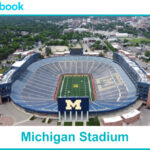Are you looking for the best way to cool down after a football game to prevent injuries and speed up recovery? This guide offers a comprehensive cool-down routine, including static stretches and expert advice, ensuring you stay in top shape. Discover why a proper cool-down is essential for your body’s recovery and flexibility.
After an intense football game, cooling down properly is crucial for your body’s recovery and long-term performance. Many players often overlook this essential step, but it’s a golden opportunity to maintain your body in peak condition. At CAUHOI2025.UK.COM, we provide reliable information and expert advice to help you optimize your health and fitness. Learn how to cool down effectively and make the most of your post-game routine with our comprehensive guide.
1. Understanding the Importance of Cooling Down After Football
Cooling down after a football game is essential for gradually returning your body to its pre-exercise state. It helps prevent dizziness, promotes blood circulation, and enhances flexibility. Here’s why you should prioritize it:
- Gradual Heart Rate Reduction: High-intensity football elevates your heart rate significantly. A cool-down helps lower it gradually, preventing sudden dizziness caused by a rapid drop.
- Improved Blood Circulation: Maintaining blood flow ensures that nutrients and oxygen continue to reach your muscles, aiding in their repair after the stresses and strains of a game.
- Enhanced Flexibility: Cooling down allows your muscles to remain warm, making them ideal for stretching, which increases your range of motion and reduces the risk of future injuries.
2. A Step-by-Step Cool-Down Routine for Football Players
A well-structured cool-down routine should include light exercise and static stretching. This combination helps lower your heart rate and improve muscle flexibility.
2.1. Light Exercise (5-10 Minutes)
Engage in light activities to gradually decrease your heart rate. Since space may be limited, jogging in place works well.
- Start at a Moderate Pace: Begin with a light jog, gradually decreasing your speed.
- Deep Breathing: Incorporate deep breathing exercises to oxygenate your system, promoting recovery.
2.2. Static Stretching (10-15 Minutes)
Static stretches involve holding a position without movement, allowing your muscles to lengthen. Focus on the legs and lower back, which are heavily used in football. Hold each stretch for 20-30 seconds.
Here are five essential static stretches:
- Groin Stretch: Sit with the soles of your feet together and gently push your knees towards the ground.
- Hamstring Stretch: Sit with one leg extended and reach towards your toes, keeping your back straight.
- Quadriceps Stretch: Stand and pull one foot towards your glutes, holding the stretch.
- Calf Stretch: Lean against a wall with one leg extended behind you, pressing your heel into the ground.
- Lower Back Stretch: Lie on your back and pull your knees to your chest.
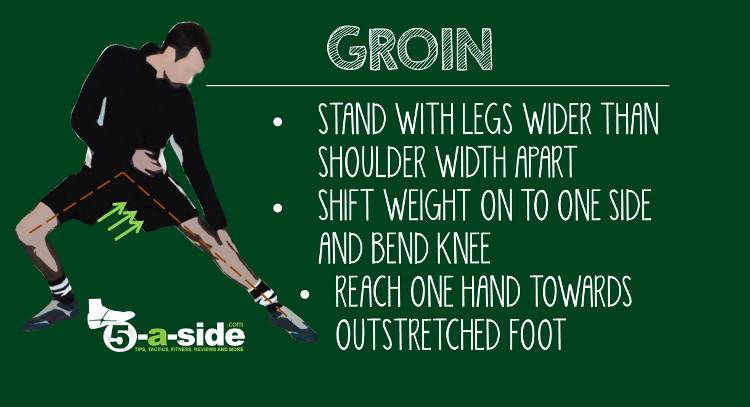 Athlete performing a groin static stretch during a football cool-down, sitting with feet together and gently pressing knees down to stretch inner thigh muscles
Athlete performing a groin static stretch during a football cool-down, sitting with feet together and gently pressing knees down to stretch inner thigh muscles
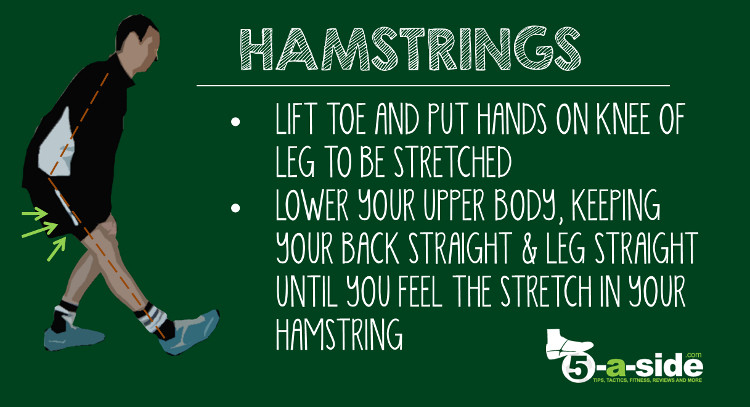 Athlete stretching hamstring after football match by extending one leg and reaching towards toes while seated
Athlete stretching hamstring after football match by extending one leg and reaching towards toes while seated
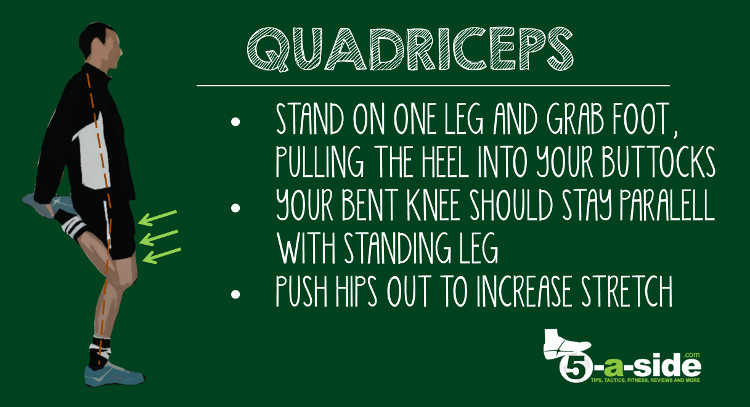 Athlete in a standing quadriceps stretch after football game, holding one foot behind and pulling towards glutes to stretch front thigh muscle
Athlete in a standing quadriceps stretch after football game, holding one foot behind and pulling towards glutes to stretch front thigh muscle
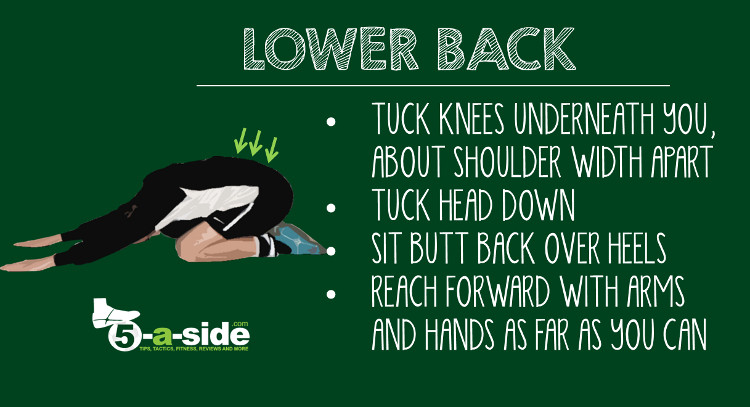 Athlete stretching lower back after football by lying on back and pulling knees to chest
Athlete stretching lower back after football by lying on back and pulling knees to chest
3. Debunking Myths About Cooling Down
Many believe that cooling down primarily reduces muscle soreness by removing lactic acid. However, research suggests that the impact on muscle soreness is minimal. A 2007 review of multiple studies (Herber & Noronha, 2007) found that stretching after exercise had little to no effect on muscle soreness experienced half a day to three days later.
While cooling down may not eliminate soreness, it still offers significant benefits, such as safely easing your body from intense activity and providing an opportunity for essential stretching.
4. The Real Benefits of Stretching Post-Exercise
Stretching after exercise is crucial for maintaining flexibility and ensuring muscles remain at their optimal length. Regular stretching can prevent muscle imbalances that lead to various issues, such as back pain caused by tight hamstrings.
For many, football may be one of the few opportunities to engage in regular exercise. Utilizing the post-game period for stretching is highly beneficial, especially if you have a job that involves long hours of sitting, which can cause muscle tightening and imbalances.
According to the American College of Sports Medicine (ACSM), stretching exercises should be performed at least two to three times per week to improve flexibility. Integrating this into your cool-down can significantly enhance your physical well-being.
5. Expert Tips for Effective Static Stretching
To maximize the benefits of static stretching, consider these tips:
- Stretch When Warm: Stretch immediately after the game, while your muscles are still warm and supple.
- Stretch to Mild Discomfort: Stretch only to the point of slight discomfort. Pushing beyond this can lead to injury.
- Maintain Proper Posture: Avoid rounding your back, as this can strain your lower back.
- Breathe Consistently: Breathe deeply and steadily throughout each stretch; do not hold your breath.
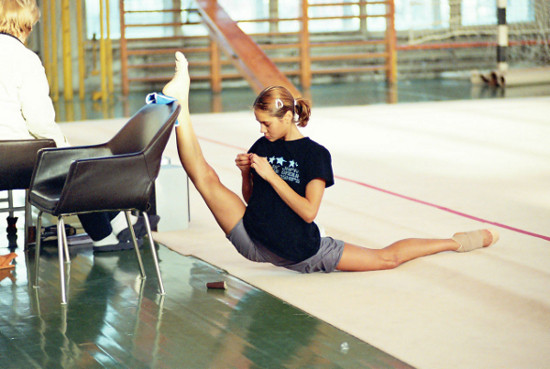 Image depicting an extreme stretch, cautioning against overstretching to avoid injury
Image depicting an extreme stretch, cautioning against overstretching to avoid injury
6. Hydration and Nutrition After Football
Besides cooling down, rehydrating and refueling your body is essential for recovery.
6.1. Hydration
During a football game, you lose fluids through sweat. Rehydrating is crucial to restore fluid balance, prevent muscle cramps, and support overall recovery.
- Water: The primary choice for rehydration. Drink water before, during, and after the game.
- Sports Drinks: These contain electrolytes that help replace those lost through sweat, such as sodium, potassium, and magnesium.
- Avoid Sugary Drinks: Limit sugary drinks like sodas and excessive fruit juices, which can cause energy crashes and hinder recovery.
6.2. Nutrition
Replenishing your energy stores and repairing muscle damage requires proper nutrition.
- Carbohydrates: Essential for restoring glycogen levels depleted during the game. Choose complex carbohydrates like whole grains, fruits, and vegetables.
- Protein: Important for muscle repair and growth. Include protein sources like lean meats, poultry, fish, eggs, dairy, or plant-based options like beans, lentils, and tofu.
- Healthy Fats: These support hormone production and reduce inflammation. Opt for sources like avocados, nuts, seeds, and olive oil.
7. Additional Recovery Methods
To further enhance recovery, consider these additional methods:
- Foam Rolling: Use a foam roller to massage your muscles, reducing tension and improving blood flow. Focus on major muscle groups like quads, hamstrings, calves, and back.
- Ice Baths: Immersing yourself in cold water (50-59°F or 10-15°C) for 10-15 minutes can reduce inflammation and muscle soreness.
- Compression Gear: Wearing compression socks or sleeves can improve blood circulation and reduce muscle swelling.
- Rest and Sleep: Adequate rest and sleep are crucial for muscle repair and overall recovery. Aim for 7-9 hours of quality sleep each night.
According to a study published in the “Journal of Strength and Conditioning Research,” active recovery methods like light exercise and stretching are more effective than passive recovery (complete rest) for reducing muscle fatigue and improving subsequent performance.
8. Customizing Your Cool-Down Routine
Every athlete is different, so it’s essential to tailor your cool-down routine to your individual needs and preferences. Consider these factors when customizing your routine:
- Intensity of the Game: Adjust the duration and intensity of your cool-down based on how strenuous the game was.
- Muscle Soreness: Pay extra attention to muscles that feel particularly sore or tight.
- Time Constraints: If you have limited time, prioritize the most critical stretches and recovery methods.
By understanding your body and adapting your routine accordingly, you can maximize the benefits of your cool-down and ensure optimal recovery.
9. Common Mistakes to Avoid
To ensure your cool-down is effective, avoid these common mistakes:
- Skipping the Cool-Down: This is the biggest mistake. Always prioritize a cool-down, even if you’re short on time.
- Stretching Cold Muscles: Stretching without warming up can increase the risk of injury. Always start with light exercise.
- Holding Your Breath: Holding your breath during stretches can reduce oxygen flow to your muscles.
- Ignoring Pain: If you feel sharp or intense pain, stop stretching immediately.
10. Stay Informed and Optimize Your Performance with CAUHOI2025.UK.COM
Remember, a proper cool-down routine is essential for safely transitioning your body from intense activity back to a resting state, enhancing flexibility, and preventing muscle imbalances. Incorporate light exercise and static stretching into your post-game routine for optimal results.
At CAUHOI2025.UK.COM, we are committed to providing you with accurate, reliable, and easy-to-understand information to help you make informed decisions about your health and fitness. Our platform offers a wealth of resources, including expert articles, practical tips, and the latest research from trusted sources in the USA.
If you have specific questions or need personalized advice, don’t hesitate to reach out to us. Our team of experts is here to assist you. Visit our website at CAUHOI2025.UK.COM to explore more and discover how we can support your journey to better health and performance. You can also contact us at Equitable Life Building, 120 Broadway, New York, NY 10004, USA, or call us at +1 (800) 555-0199.
Take control of your health and well-being with CAUHOI2025.UK.COM – your trusted source for reliable information and expert guidance.
FAQ: Cooling Down After Football
Q1: Why is cooling down important after football?
A1: Cooling down helps gradually lower your heart rate, improve blood circulation, and enhance flexibility, reducing the risk of dizziness and muscle imbalances.
Q2: What should a cool-down routine include?
A2: A cool-down should include 5-10 minutes of light exercise followed by 10-15 minutes of static stretching.
Q3: How long should I hold each static stretch?
A3: Hold each static stretch for 20-30 seconds.
Q4: Does cooling down prevent muscle soreness?
A4: While cooling down may not eliminate muscle soreness, it helps safely ease your body from intense activity and allows for essential stretching.
Q5: What are some essential static stretches for football players?
A5: Essential stretches include groin, hamstring, quadriceps, calf, and lower back stretches.
Q6: Should I stretch immediately after the game?
A6: Yes, stretch immediately after the game while your muscles are still warm and supple.
Q7: What should I avoid during stretching?
A7: Avoid rounding your back, holding your breath, and stretching to the point of pain.
Q8: What else can I do to improve recovery after football?
A8: Consider foam rolling, ice baths, compression gear, and getting adequate rest and sleep.
Q9: How can I customize my cool-down routine?
A9: Adjust the duration and intensity based on the game’s intensity, muscle soreness, and time constraints.
Q10: Where can I find more information and expert advice?
A10: Visit CauHoi2025.UK.COM for reliable information and expert guidance on health and fitness.

